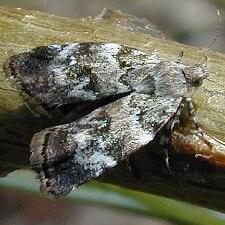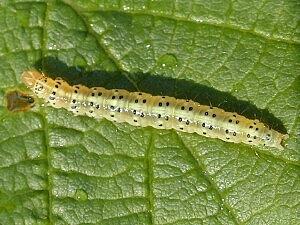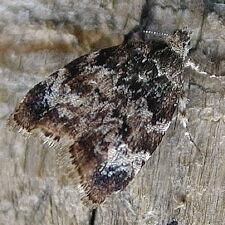

 I met Jason Dombroskie at the annual meeting of the Lepidopterists' Society at Mississippi State University in June, 2008. While we were working in the Entomological Museum he loaded onto my laptop computer many folders consisting of something like 2.7 gigabytes and thousands of photographs. It was not until I returned to Maryland that I came to realize the treasure trove Jason was contributing to MPG.
I met Jason Dombroskie at the annual meeting of the Lepidopterists' Society at Mississippi State University in June, 2008. While we were working in the Entomological Museum he loaded onto my laptop computer many folders consisting of something like 2.7 gigabytes and thousands of photographs. It was not until I returned to Maryland that I came to realize the treasure trove Jason was contributing to MPG.
Jason began collecting moths when he was 12 and has found more than 1,000 species at his home in Round Lake Centre, Ontario. During 10 years he spent as a naturalist in Ontario's Algonquin Provincial Park he compiled a list of more than 950 species. Now, as a Ph.D. candidate at the Univ. of Alberta in Edmonton he works on the systematics, evolution, and phylogeography of Tortricidae and also on an interactive matrix-based key to the lepidoptera of Canada. He presented a paper on the latter topic at the meeting I attended in June. He has thus far also photographed more than 1,000 species of living moths and larva in Canada and the United States.

 To assist in his studies, Jason systematically photographed specimens found in the Canadian National Collection at Ottawa and in the U.S. National Museum (Smithsonian) at Washington, D.C. A typical photo (above) shows the contents of a unit tray for the species Choreutis diana. A group of such trays fills each larger drawer in the museum's cabinets. Specialists visit museums in search of material to aid in the description of new species and to find material suitable for illustrating technical publications. One can see that John Heppner visited the CNC in 1976 and placed his determination labels on many specimens, thereby authenticating their identification. Usually, Jason photographed one or more individual specimens found in the unit trays. These were often photographed prior to his becoming aware of the potential to contribute material to MPG and no attempt was made to remove labels or to carefully align specimens or to be overly concerned about lighting. Thus, we may need to do some work to prepare the photographs for MPG plates.
To assist in his studies, Jason systematically photographed specimens found in the Canadian National Collection at Ottawa and in the U.S. National Museum (Smithsonian) at Washington, D.C. A typical photo (above) shows the contents of a unit tray for the species Choreutis diana. A group of such trays fills each larger drawer in the museum's cabinets. Specialists visit museums in search of material to aid in the description of new species and to find material suitable for illustrating technical publications. One can see that John Heppner visited the CNC in 1976 and placed his determination labels on many specimens, thereby authenticating their identification. Usually, Jason photographed one or more individual specimens found in the unit trays. These were often photographed prior to his becoming aware of the potential to contribute material to MPG and no attempt was made to remove labels or to carefully align specimens or to be overly concerned about lighting. Thus, we may need to do some work to prepare the photographs for MPG plates.
.jpg)

 Jason selected for his larger photograph the specimen found in the unit tray at far right of the second row. It is shown here with the label and part of another moth in the background. To the right of that photo is an altered version of it in which all of the extraneous material has been removed. The enhanced photograph, and a half-specimen photo made from it, will be used on the MPG plates.
Jason selected for his larger photograph the specimen found in the unit tray at far right of the second row. It is shown here with the label and part of another moth in the background. To the right of that photo is an altered version of it in which all of the extraneous material has been removed. The enhanced photograph, and a half-specimen photo made from it, will be used on the MPG plates.
Jason is one of the relatively few collectors who also photographs living moths and their larvae. Many of these photographs appear in the collection presented below. ~ Bob Patterson



Adults and Larva of Choreutis diana. -- All photographs © by Jason Dombroskie





